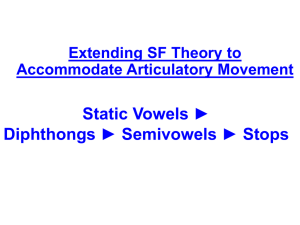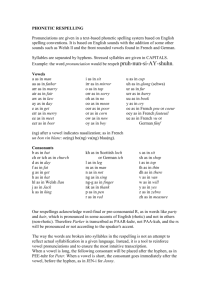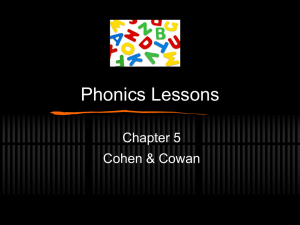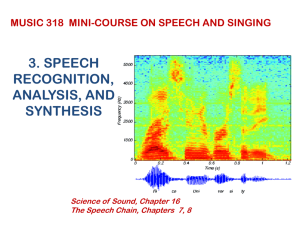SPPA 601: Study Guide for Exam 3
advertisement
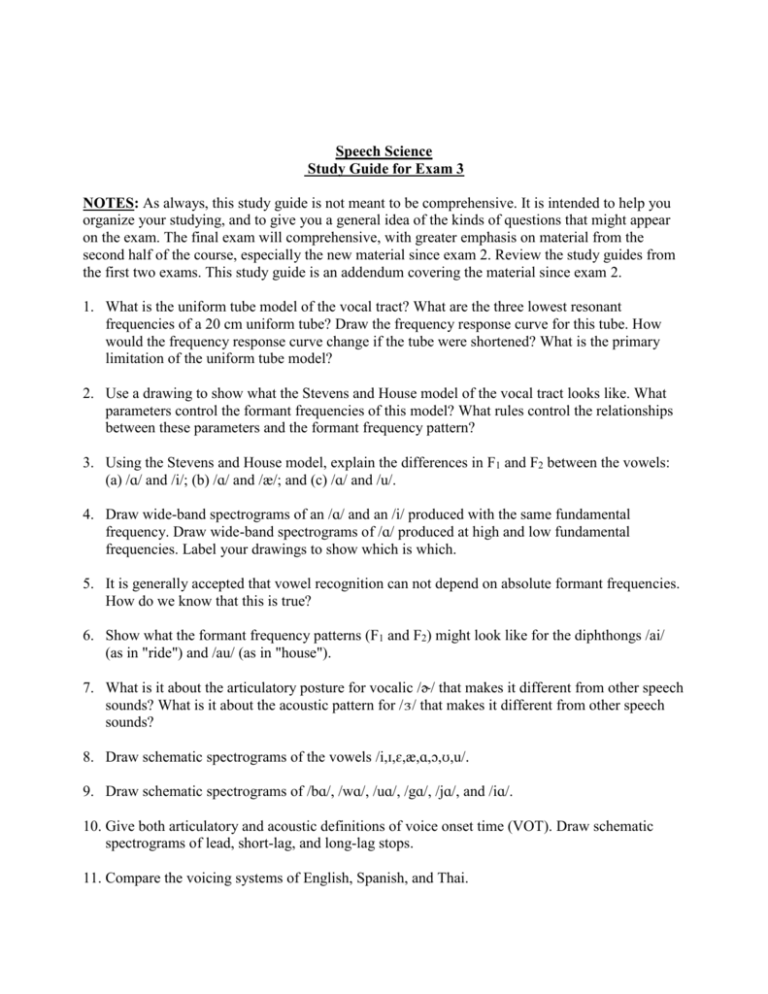
Speech Science Study Guide for Exam 3 NOTES: As always, this study guide is not meant to be comprehensive. It is intended to help you organize your studying, and to give you a general idea of the kinds of questions that might appear on the exam. The final exam will comprehensive, with greater emphasis on material from the second half of the course, especially the new material since exam 2. Review the study guides from the first two exams. This study guide is an addendum covering the material since exam 2. 1. What is the uniform tube model of the vocal tract? What are the three lowest resonant frequencies of a 20 cm uniform tube? Draw the frequency response curve for this tube. How would the frequency response curve change if the tube were shortened? What is the primary limitation of the uniform tube model? 2. Use a drawing to show what the Stevens and House model of the vocal tract looks like. What parameters control the formant frequencies of this model? What rules control the relationships between these parameters and the formant frequency pattern? 3. Using the Stevens and House model, explain the differences in F1 and F2 between the vowels: (a) /ɑ/ and /i/; (b) /ɑ/ and /æ/; and (c) /ɑ/ and /u/. 4. Draw wide-band spectrograms of an /ɑ/ and an /i/ produced with the same fundamental frequency. Draw wide-band spectrograms of /ɑ/ produced at high and low fundamental frequencies. Label your drawings to show which is which. 5. It is generally accepted that vowel recognition can not depend on absolute formant frequencies. How do we know that this is true? 6. Show what the formant frequency patterns (F1 and F2) might look like for the diphthongs /ai/ (as in "ride") and /au/ (as in "house"). 7. What is it about the articulatory posture for vocalic /ɚ/ that makes it different from other speech sounds? What is it about the acoustic pattern for /ü/ that makes it different from other speech sounds? 8. Draw schematic spectrograms of the vowels /i,ɪ,ɛ,æ,ɑ,ɔ,ʊ,u/. 9. Draw schematic spectrograms of /bɑ/, /wɑ/, /uɑ/, /gɑ/, /jɑ/, and /iɑ/. 10. Give both articulatory and acoustic definitions of voice onset time (VOT). Draw schematic spectrograms of lead, short-lag, and long-lag stops. 11. Compare the voicing systems of English, Spanish, and Thai. 12. How are the terms "phonemic" and "phonetic" different? Give an example that illustrates this distinction. 13. Draw schematic spectrograms of /så/, /ʃå/, /få/, /θå/, /zå/, /ʒå/, /vå/, and /ðå/. 14. For your drawings above, explain the differences between: (a) /sɑ/ and /ʃɑ/, and (b) /sɑ/ and /zɑ/. 15. Show what the English vowel system looks like for an average adult male on: (a) a standard F1F2 plot, and (b) an acoustic vowel diagram. Label the axes and show where the vowels /i/, /æ/, /a/, and /u/ would fall. What is the purpose of an acoustic vowel diagram? On the F1-F2 plot, show what the vowel system of an average adult female might look like. 16. Describe the experiment conducted by Peterson and Barney (1952). At first glance, this would seem to be a very simple and straightforward experiment that would be of interest only to the occasional speech science nerd. Explain why this experiment has attracted so much attention. 17. What acoustic information do listeners use to identify vowels? List both primary and secondary cues. Pick two of the secondary cues and briefly describe the experimental evidence supporting a perceptual role for that cue. 18. What do the terms diffuse, compact, acute, and grave mean when applied to the formant patterns of vowels?


